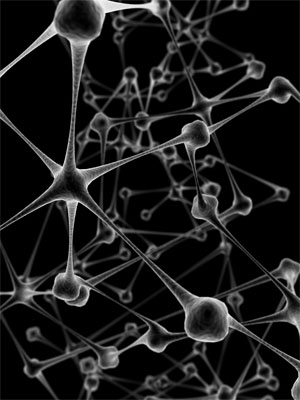 By Dr. Paul Drew, author of Red Carpet Posture
By Dr. Paul Drew, author of Red Carpet Posture
Where posture could make a difference with SPD is that it’s one less overload of stimuli going to the central nervous system and the brain. If a person is standing, moving, or sitting with incorrect posture and not in the correct alignment, he or she may experience an overload of stimuli.
People without SPD get used to being in an incorrect alignment or posture, and can filter out those signals of overstretching and tightness. Even though there are muscles that are adaptively tighter, normally that signal of tightness is ignored by the brain. With SPD, the signal won’t get processed out, and could be interpreted as pain.
Let’s take an example of someone who is standing with the shoulders forward. What will happen is that the muscles between the shoulder blades become overstretched and those in front of the shoulder become tighter. The muscles that are in between the shoulders activate stretch receptors that send stimuli to the brain that these muscles are being overstretched. Now, there will be more stimuli along with other stimuli coming into the brain leading to an overload.
Golgi Tendon Organs
There are also Golgi tendon organs which are inside the tendons of muscles, and help to prevent a muscle from over exertion such as a person who is lifting a lot of weight. When the tendon gets too much pressure, the Golgi tendon organ sends a message to brain to stop the contraction.
Often this signal will be filtered out when the muscle contraction is not that intense, but the problem with people who have SPD is that this signal may not be getting filtered out of the brain.
When someone is in an incorrect posture such as a slouch position, then muscle tightening in the front of the shoulders is activating the Golgi receptors which are sending signals to the brain to stop this contraction which is usually filtered out in the normal brain, but not one with SPD. This is a reason for having good posture, and trying deep tissue treatment or massage. These will help to deactivate the Golgi receptors to decrease the overload of signals to the brain.
Nerves in Sensory Function
One has to know that the same nerves that control muscle contraction are also involved in sensory function and nerves can also be calmed with deep pressure massage and proper posture. Nerves themselves can also be tight or won’t glide as well in the body. For example, we have major nerves that start from the spine in the neck, and go deep in the shoulder area, and down into the arm. These are referred to as brachial nerves.
If someone has bad posture such as one whose shoulders are rounding forward, the brachial nerves that travel down the arm into the hand will be affected. There may be a tendency for these nerves to be tight or shortened and not glide very well in the body.
Brachial Nerves
Nerves are like muscles in the fact that they need to be stretched as well. One of the most common brachial nerves to have problems is the median nerve, which can be felt as tenderness and pain in the hand between the thumb and index finger where one of the endings of the nerve exists. This is the same symptom that occurs with individuals who have Carpal Tunnel Syndrome. In a person who has SPD, this nerve may be sending signals to the brain of pain that is not being filtered.
A physical therapist can show how to stretch tight neural pathways. For example, the median nerve can be stretched by putting your arm out to the side, keeping it straight at the elbow and the whole arm is parallel to the ground. The palm of the hand is against a wall, with the fingers pointing backwards and touching the wall. Now turn the body the opposite way, while keeping your palm against the wall and the arm straight. You will start to feel numbness in your hand. This is a sign that the median nerve is being stretched. This may be a complicated example to give, but it is something that a therapist can show you.
Massage at Home, not a Spa
I do recommend those with SPD who seek massage or deep tissue treatment to have someone come to the home, instead of going to a spa, because in your home, you are more familiar with your surroundings. At home, you know the stimuli that are going on around you, the normal sounds and lighting that are familiar to you. When one with SPD goes to a spa, there are stimuli that are not familiar, such as music or different sounds from the spa facility that will raise the amount of stimuli that could overwhelm the brain.
I am the author of “Red Carpet Posture†which is a book that gives advice and exercises to improve posture. When I designed the book, I tried to make the exercises simple enough as to not be overwhelming, and not require an overabundance of stimuli. Even if you don’t do a single exercise pictured in the book, the advice will be an exercise in itself. “Red Carpet Posture†can be found at www.RedCarpetPosture.com
Dr. Paul Drew has a Doctor of Physical Therapy from the University of Southern California. He is the author of Red Carpet Posture, which features advice and exercises to help improve posture. Learn more at www.redcarpetposture.com.